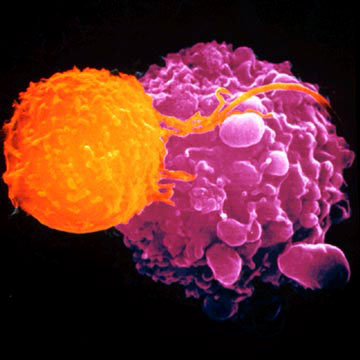Blood Grouping
Author - Nadim Dinani
An essential component of human body is the blood. It aids in transport of nutrients and oxygen across the body. However the complexity of blood is indeed a mystery. With the vast variation in the genotypes from individual to individual, the components and complexity of blood also differs. It is practically impossible to develop synthetic synonym of blood. Therefore, the only natural source of blood is the human itself. Although organisms belonging to kingdom animalia all have blood as the common connective tissue, there is a vast difference even in their blood components.
So how do we classify the blood groups? Speaking of classifying, it is not feasible and impractical. But certain essential components can be used to classify human blood. The ABO blood grouping system is one such classification.
The surface of the red blood cells contains large number of antigenic determinants. These are direct or indirect products of genes. These determinants are used to classify the blood into different groups. The ABO system contains 4 blood groups and is determined by the presence or absence of two different antigens – A and B on the surface of the red blood cells.
 Red blood cells of group A carry antigen A on their surface, Red blood cells of group B carry antigen B on their surface, Red blood cells of group AB carry both antigens on their surface, Red blood cells of group O carry no antigens. The serum contains iso antigens specific for the antigen that is absent on the red cells.
Red blood cells of group A carry antigen A on their surface, Red blood cells of group B carry antigen B on their surface, Red blood cells of group AB carry both antigens on their surface, Red blood cells of group O carry no antigens. The serum contains iso antigens specific for the antigen that is absent on the red cells.Another factor involved in ABO system is the Rh factor. Rh factor symbolises Rh antigens. Rh antigens are shared between monkeys and humans. Person having Rh antigen are designated as Rh positive (Rh+) while those lacking the antigen as Rh negative (Rh-). They are considered as immune antibody.
Basic immunological techniques are applied in determining the antigens present on the RBC’s. The Principle behind the test is the reaction taking place between an antigen and its specific complementary antibodies. When an insoluble antigen reacts with its complementary antibody, it results into agglutination and the reaction is termed as agglutination reaction.
The Blood group of an individual is most easily studied by performing a slide agglutination reaction. When a particular antigen is mixed with its antibody in presence of electrolytes at a suitable temperature and pH, the particles are seen clumped or agglutinated. Mixing the antigen and antisera with gentle racking of the slide facilitates the reaction. The reaction takes place within a few seconds. Three antisera, namely antisera A, antisera B and antisera D are used.
Cells of Group A agglutinate with antisera A only. Group B RBC’s agglutinate with antisera B only, Group AB cells agglutinate with both antiseras while group O do not agglutinate with any. Similarly individuals with Rh factor show agglutination with antisera D while those who lack Rh factor show no agglutination with antisera D.
The testing of blood group has important clinical significance in Medical aspects. It is Important i blood transfusions. Blood transfusions are required in cases of accidents, surgical processes, anemia, thalessemia, Leukemia (Blood Cancer) and several other cases. In case the blood groups do not match, the antibodies in the patient’s body react with the transfused RBC cells and cause agglutination and clot leading to blockage of artery and organ failure. Although there exists a pattern for transfusion. An O blood group individual can donate blood to any blood group patient and termed as Universal donor, while AB group can accept transfusion from any blood group and called universal acceptor. However it can donate blood only to AB group patients. Group A and B can donate blood to A and B group patients respectively and to AB but can accept from A and B resp., and Group O. Group O can accept blood transfusion from Group O only. Another important criteria in blood transfusion is Rh factor. Irrespective of ABO group an Rh + can donate and accept blood from and Rh + individual only. Same is the case with Rh – individuals.





















